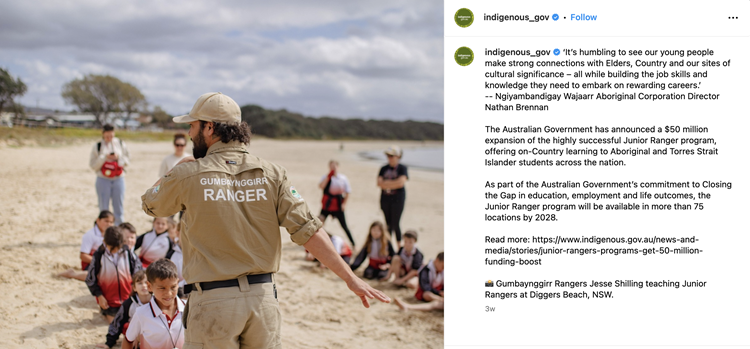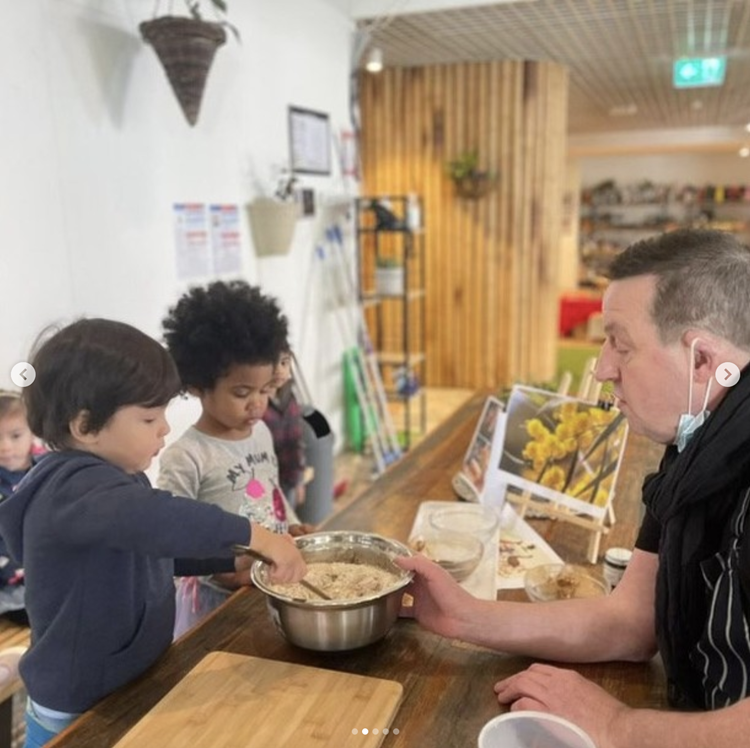As early childhood educators, you know the year is full of opportunities to incorporate occasions and special dates into your program. From Clean Up Australia Day, to Kids Inventors Day, World Wildlife Week and Science Week, have you thought about how to include First Nations perspectives?
By incorporating First Nations perspectives into a range of celebrations, you can offer children new ways of finding a meaningful connection to culture. This enables children to weave their appreciation of First Nations culture into their daily lives, becoming an integral part of identity.
Here are five different days/weeks often observed in the early childhood calendar, along with practical examples of how you could incorporate First Nations perspectives into these celebrations.
-
Nature Play Week – 8th to 18th April
What a beautiful platform this week provides for the inclusion of First Nations perspectives. Nature Play Week celebrates initiatives of all shapes and sizes that reconnect children with nature and the outdoors.
Nature play is a term used to describe the creation of simple play opportunities in the natural environment.
Natureplay.org.au
Ideas:
Why not use this week to explore some traditional Indigenous games? Yulunga Traditional Indigenous Games is a fabulous resource available freely online that contains a selection of games and activities from Aboriginal and Torres Strait Islander societies all around Australia.
It offers a chance to learn about, appreciate, and experience facets of Indigenous culture, and every activity is suitable for children and adults of all ages, abilities, and backgrounds. This resource celebrates all aspects of outdoor play.
There are also several First Nations businesses that run incursions around traditional games you may like to connect with. Head to the Supply Nation website to start your search.
.png)
2. World Bee Day – 20th May
Did you know that Australia has over 1,700 species of native bees, all of which play a crucial role in Australian ecosystems and in biodiversity? This special day can be used as a provocation to explore the special role that native bees have played in Aboriginal communities and culture.
Ideas:
- Consider learning your local Aboriginal word for the native bees found in your area.
- Perhaps you could bring in some beeswax as a sensory experience to share with children, and further research and discuss how native beeswax was and is traditionally used in different areas of Australia, or explore how First Nations peoples across Australia used beeswax.
|
The Australian Curriculum website provides many interesting examples of how First Nations groups around Australia use beeswax, including:
The Wimaranga Peoples of the western Cape York Peninsula region in Queensland use fire to heat beeswax and change its state from a hard, rigid solid material to a softer, malleable molten liquid. Once molten, the wax is used to repair cracked water carriers, to attach decorative articles to hair and mend and preserve twined fibres. When the heat is removed, the wax hardens again to a solid state, extending the durability of the repaired implements.
|
3. World Ranger Day – 31st July
In Australia, Indigenous ranger projects support Indigenous people to use their traditional knowledge with conservation training to protect and manage their land, sea, and culture. The type of work undertaken is diverse and includes things like controlling invasive species, water management, and cultural burning and tourism operations.
Last year, the government announced that the highly successful Indigenous Ranger Program will receive a $359 million boost to double the number of Indigenous rangers by 2030.
Ideas for exploring the role of Indigenous rangers in your classroom:
- Read ‘Looking After Country with Fire’ and ‘Trees’, both picture books by Victor Steffensen. These books explore Aboriginal people’s unique relationship with Country and demonstrate to children how people have cared for Country for thousands of years. Each book also contains a song relating to the theme of each respective book, which is a lovely musical way to share this knowledge with your children.
- Take children for walks on Country in your local area, connect with your local mob and see what local caring for Country initiatives are taking place near you.
- Set up a ‘ranger play area’ in your classroom; where children can role play being rangers and the types of activities they undertake.

Image source: Instagram @indigenous_gov
4. National Science Week 10th – 18th August
National Science Week is the perfect week to celebrate Indigenous ingenuity and innovation. Science in its various forms, plays a central role in many parts of First Nations culture, and is an easy way to engage in learning. You can use Indigenous science to facilitate outdoor learning opportunities around Aboriginal principles of caring for Country, fostering in children an appreciation of their responsibility towards looking after the world around them.
Ideas:
- Start a bush tucker garden.
- Initiate visual arts experiences using natural materials.
- Explore Indigenous seasonal calendars.
- Landcare Australia’s Junior Landcare website includes some great resources around First Nations science perspectives, including activity suggestions and teaching guides, all of which are well worth. checking out and adapting to your early childhood setting.
- Head to the Little Scientists website for prerecorded webinars on this subject: https://littlescientists.org.au/shop/celebrating-australias-first-scientists and other STEM 1 hour sessions: https://littlescientists.org.au/workshops/stem-webinar-bundles/
5. National Wattle Day – 1st September
Wattle is such a widespread and well-known Australian plant, and one which is very easily accessible. It had many different uses for different First Nations groups across Australia.
A mainstay of the diet of Indigenous Australians for over 40,000 years, Wattleseed was traditionally ground and used to make a type of flour. With a hard husk that protects the seed during long periods of dormancy on the ground, Wattle seed can survive tough weather conditions and historically was a valuable source of protein and carbohydrate in times of drought. Aboriginal women would collect the pods and parch the seeds with fire, before grinding them into flour to be mixed with water and made into cake. These cakes were baked in the coals of a fire and eaten immediately or stored for later use.
Reference: Warndu.com
In the Central Desert, damper made from native seeds still forms an important part of the Aboriginal diet, though store-bought plain and self-raising flour are now frequently used instead. Find out about how wattle was used for tools, food and medicine by Western Desert traditional owners for 50,000 years, as shown by a study which examined ancient campfires in this article from The Guardian.
In Sydney, acacia wattle flowers helped First Peoples to read the land. In this video, Kamay National Park Ranger Aungie Pamela Young teaches a group of schoolchildren about the Aboriginal calendar by showing them the acacia wattle flowers. When they bloom the women and girls were taught that the whales were migrating, it was good lobster hunting time and that the medicine on the tree was ready.
Ideas:
- Celebrate the many varied Indigenous uses of wattle throughout history.
- Wattleseed in spice form can easily be purchased online and makes a great addition to playdough and cooking.
- Wattleseed damper is a big hit and one you might like to try making with children!

Image via Instagram @senseselc
As you can see, there is no need to limit your inclusion of First Nations perspectives to one or two times a year. With a history that extend back 60,000 plus years, the knowledge systems held by Indigenous Australia have the potential to greatly enrich the learnings of our children. It may just mean thinking outside the box, and reflecting on how you might do things differently this year.
So, when you pull out the calendar at the start of each month to plan your lessons, why not get creative and proactively look to where you might apply a First Nations lens to a date you wouldn’t usually think to.
About Deborah
Deborah Hoger is a Dunghutti woman and owner and Director of a business specialising in Indigenous educational resources. She is passionate about using early childhood as a platform to introduce children to the rich depth of knowledge and unique perspectives that Indigenous Australia has to offer.